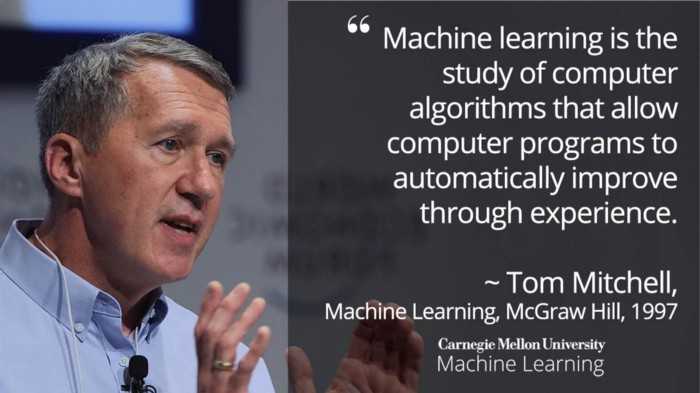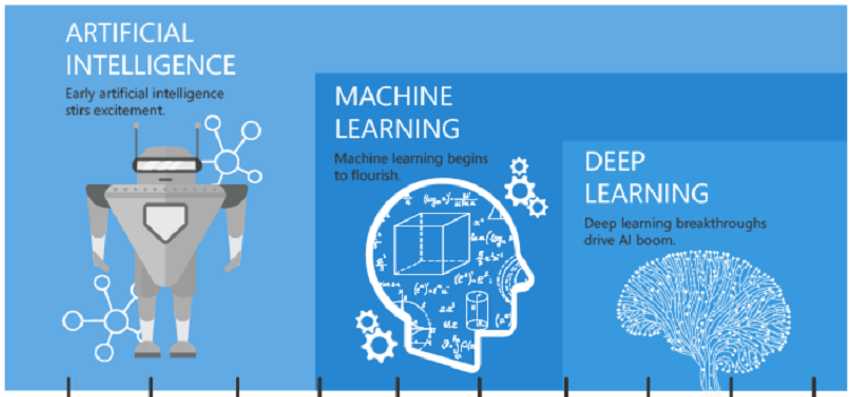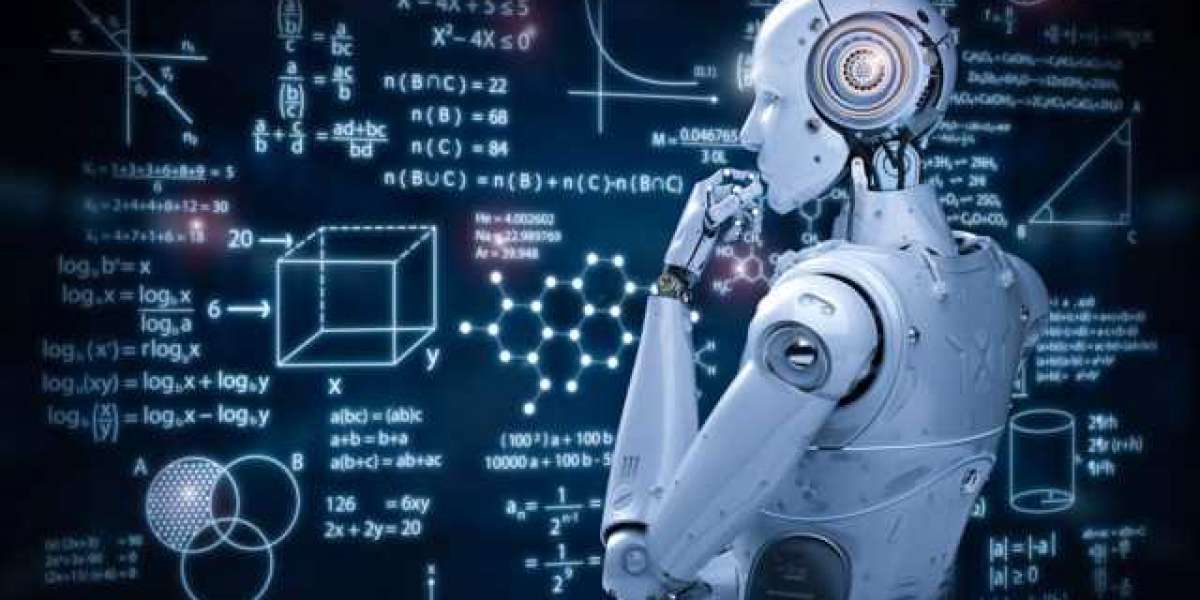There’s still much confusion within the public and the media regarding what truly is Artificial Intelligence , and what truly is Machine Learning . Often the terms are being used as synonyms, in other cases, these are being used as discrete, parallel advancements, while others are taking advantage of the trend to create hype and excitement, as to increase sales and revenue.
Below we go through some main differences between AI and machine learning.
What is Machine Learning?

A scientific field is best defined by the central question it studies. The field of Machine Learning seeks to answer the question:
“How can we build computer systems that automatically improve with experience, and what are the fundamental laws that govern all learning processes? ”
Machine Learning(ML) is a branch of artificial intelligence, and as defined by Computer Scientist and machine learning pioneer Tom M. Mitchell: “Machine learning is the study of computer algorithms that allow computer programs to automatically improve through experience.” ML is one of the ways we expect to achieve AI. Machine learning relies on working with small to large datasets by examining and comparing the data to find common patterns and explore nuances.
For instance, if you provide a machine learning model with many songs that you enjoy, along with their corresponding audio statistics (dance-ability, instrumentality, tempo, or genre). It oughts to be able to automate (depending on the supervised machine learning model used) and generate a recommender system as to suggest you with music in the future that (with a high percentage of probability rate) you’ll enjoy, similarly as to what Netflix, Spotify, and other companies do.
In a simple example, if you load a machine learning program with a considerable large dataset of x-ray pictures along with their description (symptoms, items to consider, and others), it oughts to have the capacity to assist (or perhaps automatize) the data analysis of x-ray pictures later on. The machine learning model looks at each one of the pictures in the diverse dataset, and find common patterns found in pictures with labels with comparable indications. Furthermore, (assuming that we use an acceptable ML algorithm for images) when you load the model with new pictures, it compares its parameters with the examples it has gathered before to disclose how likely the pictures contain any of the indications it has analyzed previously.

The type of machine learning from our previous example, called “supervised learning,” where supervised learning algorithms try to model relationship and dependencies between the target prediction output and the input features, such that we can predict the output values for new data based on those relationships, which it has learned from previous datasets fed.
Unsupervised learning, another type of machine learning are the family of machine learning algorithms, which have main uses in pattern detection and descriptive modeling. These algorithms do not have output categories or labels on the data (the model trains with unlabeled data).
Reinforcement learning, the third popular type of machine learning, aims at using observations gathered from the interaction with its environment to take actions that would maximize the reward or minimize the risk. In this case, the reinforcement learning algorithm (called the agent) continuously learns from its environment using iteration. A great example of reinforcement learning are computers reaching super-human state and beating humans on computer games .
Machine learning is mesmerizing, particularly its advanced sub-branches, i.e., deep learning and the various types of neural networks. In any case, it is “magic” (Computational Learning Theory) , regardless of whether the public, at times, has issues observing its internal workings. While some tend to compare deep learning and neural networks to the way the human brain works, there are essential differences between the two .
What is Artificial Intelligence (AI)?

Artificial intelligence, on the other hand, is vast in scope. According to Andrew Moore , Former-Dean of the School of Computer Science at Carnegie Mellon University, “Artificial intelligence is the science and engineering of making computers behave in ways that, until recently, we thought required human intelligence.”
That is a great way to define AI in a single sentence; however, it still shows how broad and vague the field is. Fifty years ago, a chess-playing program was considered as a form of AI , since game theory, along with game strategies, were capabilities that only a human brain could perform. Nowadays, a chess game is dull and antiquated since it is part of almost every computer’s operating system (OS) therefore, “until recently” is something that progresses with time.
AI, as we know it today, is symbolized with Human-AI interaction gadgets by Google Home, Siri, and Alexa, by the machine learning powered video prediction systems that power Netflix, Amazon, and YouTube. These technological advancements are progressively becoming essential in our daily lives. They are intelligent assistants that enhance our abilities as humans and professionals — making us more and more productive.
In contrast to machine learning, AI is a moving target , and its definition changes as its related technological advancements turn out to be further developed .
AI Achievements
The use of AI techniques has been applied to many real-world problems. Applications of AI include:
- Natural language processing.
- Hand writing recognition.
- Robotics (e.g. for use in industry).
- Data mining - discovering patterns in large data sets (e.g. for fraud detection).
- Computer games - making the behaviour of computer controlled characters more realistic.
Widely publicised achievements in AI include:
- The Google driverless car.
- Deep Blue - a chess-playing computer capable of beating the best human players.
- Watson - a system capable of understanding and answering quiz questions asked in natural language. Watson successfully competed against other human contestants on the American quiz show Jeopardy.
- Siri - an "intelligent personal assistant" available for the Apple iPhone. Siri uses a natural language interface for answering questions.
AI Techniques
Research into AI has lead to the development of a number of general methods for solving difficult problems.
- Function optimisation - a number of techniques have been developed that, starting with one or more initial attempts at a solution, attempt to move closer to an ideal solution using a process of iterative improvement. Techniques include naive random searching, hill climbing, simulated annealing and genetic algorithms. Genetic algorithms are inspired by the natural process of evolution and are part of the wider AI subfield of evolutionary computation.
- Rule-based expert systems - general reasoning algorithms have been developed that work with a collection of facts and rules for a specific domain (e.g. medical diagnosis) to mimic the actions of a human expert. There are different approaches to modelling the rules (e.g. first-order logic and fuzzy logic).
- Neural networks - development of artificial neural networks (ANN) has been influenced by biological neural networks. Artificial neural networks are used to find patterns in data or model complex relationships.
- Probalistic methods - a number of techniques have been developed that allow software to make intelligent decisions even when the knowledge of the problem is incomplete or uncertain. Techniques include Bayesian networks and Markov models.
- Statistical classification - a number of techniques have been developed that use pattern matching to classify an item as belonging to a particular group. Techniques include decision tree learning and the k-nearest neighbours algorithm.
AI vs. Machine Learning
Most of our smartphone, daily device or even the internet uses Artificial intelligence. Very often, AI and machine learning are used interchangeably by big companies that want to announce their latest innovation. However, Machine learning and AI are different in some ways.
AI- artificial intelligence- is the science of training machines to perform human tasks. The term was invented in the 1950s when scientists began exploring how computers could solve problems on their own.

Artificial Intelligence is a computer that is given human-like properties. Take our brain; it works effortlessly and seamlessly to calculate the world around us. Artificial Intelligence is the concept that a computer can do the same. It can be said that AI is the large science that mimics human aptitudes.
Machine learning is a distinct subset of AI that trains a machine how to learn. Machine learning models look for patterns in data and try to conclude. In a nutshell, the machine does not need to be explicitly programmed by people. The programmers give some examples, and the computer is going to learn what to do from those samples.

Deep learning
Deep learning is a sub-field of machine learning. Deep learning does not mean the machine learns more in-depth knowledge; it means the machine uses different layers to learn from the data. The depth of the model is represented by the number of layers in the model. For instance, Google LeNet model for image recognition counts 22 layers.
In deep learning, the learning phase is done through a neural network. A neural network is an architecture where the layers are stacked on top of each other.
Summary
Artificial intelligence and machine learning are two confusing terms. Artificial intelligence is the science of training machine to imitate or reproduce human task. A scientist can use different methods to train a machine. At the beginning of the AI's ages, programmers wrote hard-coded programs, that is, type every logical possibility the machine can face and how to respond. When a system grows complex, it becomes difficult to manage the rules. To overcome this issue, the machine can use data to learn how to take care of all the situations from a given environment.
“Research; the curiosity to find the unknown to make it known!!!”








